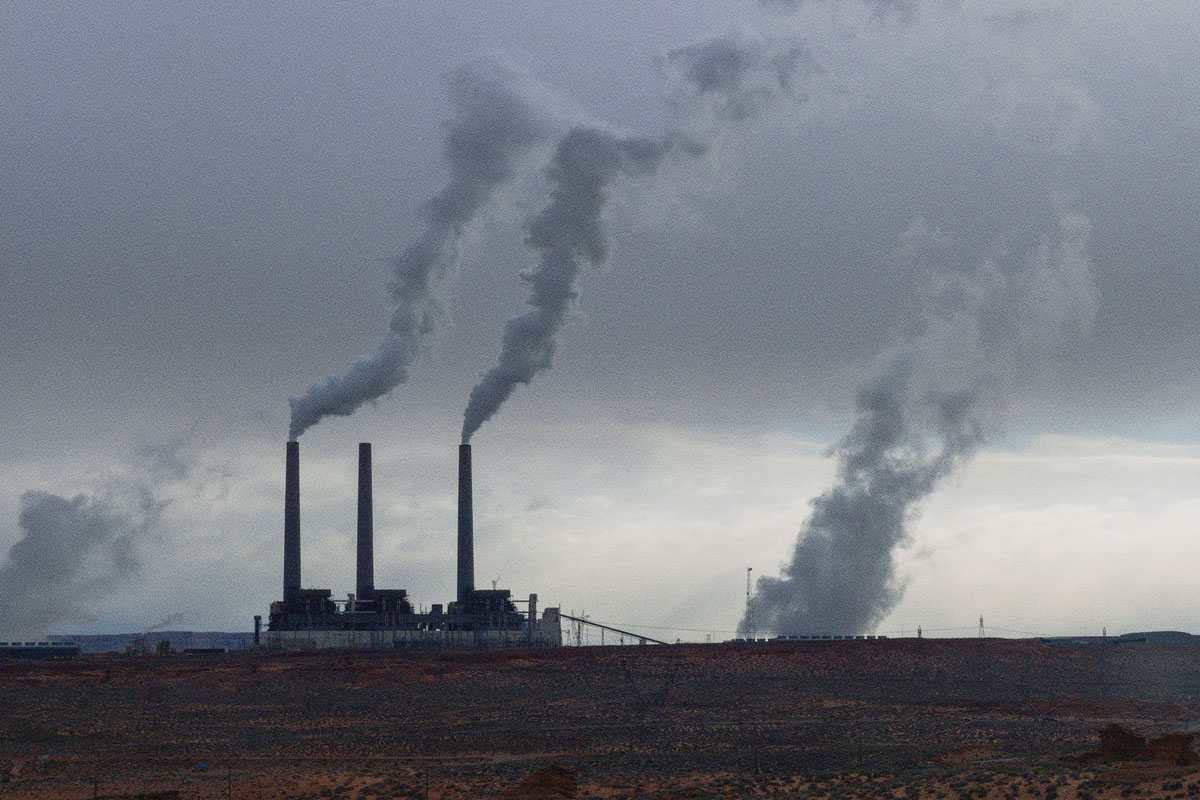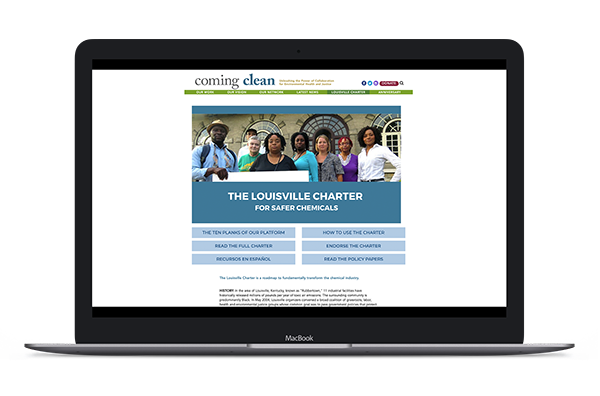 READ HABITABLE’S NEW REPORT
READ HABITABLE’S NEW REPORTPediatric physician, Dr. Nicholas Newman, discusses his experience treating patients impacted by PFAS in this video by the Great Lakes Center for Reproductive and Children’s Environmental Health.
Overwhelming evidence suggests our health and well-being are significantly impacted by the conditions in the environment where we are born, live, learn, work, and play, with some suggesting that our zip codes are better predictors of health than our genetic code.
Also referred to as social determinants of health , these conditions range from access to and quality of education, transport, and health care services to housing conditions and the toxics and pollutants we are exposed to in the neighborhoods we live in.
While definitions may vary around what these conditions are and which should be prioritized, there is general consensus that:
- These conditions exist because of decision-making processes, policies, structures, and practices designed and implemented by humans;
- These conditions create inequities in health, disproportionately impacting low-income families, families living with incomes below the federal poverty level, and people of color, and;
- Cross-sector collaboration is needed to deliver the highest standards of health for all, with special attention given to the needs of those who are at greatest risk.

In alignment with efforts tackling the root causes of health inequities, Healthy Building Network (HBN) entered into a partnership with United Renters for Justice (IX), a nonprofit working to transform the Minneapolis housing system, to reduce tenant exposures to toxic chemicals used in building products. Funded through an Environmental Assistance grant by the Minnesota Pollution Control Agency (MPCA), this collaborative project prioritized toxic exposure reduction in areas designated to be of environmental justice (EJ) concern by the MPCA. EJ concern areas include tribal land and census tracts with higher concentrations of low-income residents and people of color – communities that are disproportionately impacted by toxic chemical exposures and other forms of pollution.
This collaboration provided the unique opportunity to embrace the perspective of tenants in the co-creation of resources to help them make informed decisions about the products used in their housing units and common areas. Specifically, this meant designing resources that would leverage IX’s organization and mobilization skills as well as the structure of a recently established tenant cooperative, “A Sky Without Limits.” Also, it meant increasing information accessibility, for example, through the use of non-technical language and making the resources available in both English and Spanish.
Tenant organizations and other stakeholders can access HBN’s healthier building product guidance at informed.habitablefuture.org and by watching this 10-minute seminar video:
Watch the Seminar (English)
Ver el Seminario (Español)
This high-level, 10-minute recording can be used to educate the general public (e.g., tenant meetings) about the importance of avoiding toxic products. It begins by breaking down myths and misconceptions around the perceived hazards and safety of natural and synthetic chemicals and discusses how toxic products impact individuals and families, especially children, along the lifecycle of products.
By empowering the people most affected by toxic chemical exposures to advocate for and create change in their living conditions, this project creates avenues for creating a safer environment for all. Anyone who influences product purchasing decisions – including manufacturers, building owners, managers, developers, architects, investors, policy makers, and consumers – has the power and responsibility to reduce health inequities for those using or exposed to those products every day. This includes residents, workers, installers, and the communities that surround the facilities where these materials are processed and disposed of. By making material health a priority in your decision-making processes, you’ll be joining efforts to tackle the root causes of health inequities in communities around the world. Visit informed.habitablefuture.org to learn how our building product guidance can help you make better material choices.

This comprehensive guide, designed for architects, engineers, and contractors, provides expert insights, academic research, and practical advice on various aspects of piping systems, including material properties, safety considerations, health risks, environmental impacts, and emerging trends.
Who do you think would win at the sustainability tug-o-war? Team safer materials or team low-carbon products?
Healthy Building Network (HBN) has often heard these two issues framed as a competition–a false choice. Instead, we know that these two powerhouses must work together for optimal results.
In 2022, HBN and Perkins & Will published a study highlighting building products that can do just that: optimize material health and lower their carbon footprint. This study identified key drivers and paths towards low embodied carbon and safer materials as well as when to consider and optimize both at the same time. To illustrate this point, we plotted an actionable path for project teams using flooring products as an example.
Team Low-Carbon Products: The embodied carbon of building materials contribute a whopping 11% to global carbon emissions.1 Most of these emissions happen before that product even gets installed. Additionally, the poorest countries and regions are those most impacted in terms of damage and loss of life by the effects of climate change.2 “That 11% might sound small compared with the impact of operational energy (28%), but for new construction, embodied carbon matters just as much as energy efficiency and renewables. That’s because the emissions we produce between now and 2050 will determine whether we meet the goals of the 2015 Paris climate accord and prevent the worst effects of climate change,” explains a BuildingGreen report.
Team Safer Materials: We spend 90% of our time indoors, and hundreds of industrial chemicals are found in our indoor spaces— in the dust, in the air we breathe, and in our bodies.3 The health impact of building materials are not limited to their time in use in the building, they often occur during manufacturing, installation, and at the product’s end of life. People living in close proximity to industrial facilities experience persistently worse air quality than average and exposure to industrial pollutants disproportionately impacts people of color.4 Another report suggests man-made pollution has exceeded the Earth’s safe operating boundaries.5 “Transgressing a boundary increases the risk that human activities could inadvertently drive the Earth System into a much less hospitable state, damaging efforts to reduce poverty and leading to a deterioration of human wellbeing in many parts of the world, including wealthy countries.” Professor Will Steffen, researcher at the Centre and the Australian National University, Canberra.6


Reducing toxic chemical use and the emissions associated with building materials NOW is a vital sustainability strategy for any project team.
The Research:
To identify the key drivers of embodied carbon and the key opportunities to reduce embodied carbon for each product type we read Environmental Product Declarations (EPDs), reviewed literature and data compilations, and conducted manufacturer interviews. The hazards associated with flooring products, the chemicals used to make those materials and the hazards associated with the chemicals used to install those products were collected using InformedTM product guidance and hazard data in the Pharos database.
Embodied Carbon:
Our research concluded that flooring products’ embodied carbon impacts are mostly associated with the raw material supply. The biggest opportunities to reduce embodied carbon in flooring comes from choosing a different product type that uses less impactful raw materials as well as products with longer service life. Carpet was consistently the most impactful product type due in part to its short service life. Plant-based flooring products, such as wood and natural cork, were consistently the least impactful.
Material Health:
Not surprisingly, the biggest opportunities to avoid chemicals of concern in flooring come from choosing a product type with typically fewer chemicals of concern. Products made from plastic, such as vinyl, nylon, or polyurethane tend to use more hazardous chemicals during manufacturing, installation, use, and end of life, than mineral or plant-based products. Selecting a product that is yellow or above in InformedTM color ranking Flooring Guidance, such as wood or linoleum, or even a non-vinyl resilient flooring will minimize the use of hazardous chemicals. Products in the red zone such as vinyl and carpet, should be avoided.
Conclusion:
When we looked at the opportunities to improve embodied carbon and improve material health for flooring we found that they were largely complementary.
- Use flooring with a long service life. Avoid products with a short service life, like carpet, and select a product with a long service life, like wood.
- Choose biobased product types. Linoleum, wood, and cork are all flooring product types that were identified as both resulting in lower embodied carbon and safer in terms of material health.
- If you must use carpet, avoid use of virgin nylon carpet product types. While carpet generally can contain more chemicals of concern than other product types, carpet made with virgin nylon as a generic product type was identified as having the highest embodied carbon within the flooring category.
- Use circular and safe materials. Use recycled content from known sources. Prefer products that have been tested for these chemicals and have below detectable levels or below levels that would be found in virgin resin content for these materials.
These findings highlight the importance of pre-emptive design. Parallel to the way we conduct early modeling for energy or water use, the industry needs to model for embodied carbon and material health. A materials modeling approach–where the entire team is engaged early – before design development or construction development – will enable educated decisions before the design is set. Use HBN’s Embodied Carbon and Material health in Flooring and Drywall report and tools like Informed™ and the Carbon Smart Materials Palette to select typically healthier, low-carbon building product options.
SOURCES
- Architecture 2030. “Why the Building Sector?” https://architecture2030.org/why-the-building-sector/
- United Nations. “The Sustainability Development Goals Report 2019”. 2019. https://unstats.un.org/sdgs/report/2019/The-Sustainable-Development-Goals-Report-2019.pdf
- Goodman, S. “Tests find more than 200 chemicals in newborn umbilical cord blood”. Scientific American. December 2, 2009. https://www.scientificamerican.com/article/newborn-babies-chemicals-exposure-bpa/ Environmental Science Technology. “Consumer Product Chemicals in Indoor Dust: A Quantitative Meta-Analysis of U.S. Studies”. 2016. 50, 19, 10661-10672. https://pubs.acs.org/doi/full/10.1021/acs.est.6b02023
- Chandra, A. et al. “Building a National culture of health. Background, action framework, measures, and next steps. RAND Corporation. 2016. https://www.rand.org/pubs/research_reports/RR1199.html
- Persson, L. Et al. “Outside the safe operating space of the planetary boundary for novel entities” Environmental Science and Technology. 56. 5. 1510-1521. 2022. https://pubs.acs.org/doi/10.1021/acs.est.1c04158
- United Nations. “Scientists Say Planetary Boundaries Crossed.” 2015. https://unfccc.int/news/scientists-say-planetary-boundaries-crossed
Insulation selection has generally focused on prioritizing a product’s ability to reduce greenhouse gas (GHG) emissions from building operation, though increasingly considerations include GHG emissions from a material’s life cycle, from manufacture through disposal (known as embodied carbon).
However, this singular focus on GHGs fails to account for other harmful emissions associated with the life cycle of these materials, including toxic pollution that disproportionately burdens Black, Indigenous, people of color (BIPOC), and/or low-income communities. As billions of pounds of new insulation is being installed in buildings each year, failure to address these toxic impacts will mean that building decarbonization efforts will further entrench environmental injustice.
Healthy Building Network (HBN) joined NRDC and Energy Efficiency for All in an analysis of the life cycle chemical and environmental justice impacts of two popular building insulation materials—fiberglass and spray polyurethane foam (SPF).

The Findings
The analysis found that both SPF and fiberglass release pollution into BIPOC communities over their life cycles, but SPF carries a much heavier pollution burden. The combined population surrounding the facilities that manufacture the key ingredient of SPF has almost double the percentage of Latino people compared to the U.S. overall. These facilities reported releasing an average of about 560,000 pounds of related hazardous chemicals every year and have a history of noncompliance with EPA regulations. Our previous research also found that spray foam has significant hazardous chemical concerns during installation and use in buildings.
Regarding embodied carbon, while the specifics vary, studies (such as here, here, and here) consistently show that closed cell SPF has significantly higher embodied carbon per R-value than fiberglass insulation. Further, SPF is made from almost entirely fossil fuel-derived inputs, with no recovery, reuse, or recycling of the material—necessitating continued extraction and refining of fossil fuels to produce this insulation product. Overall, comparing material health, environmental justice, and embodied carbon impacts between SPF and fiberglass, fiberglass is preferable on all accounts.
However, fiberglass manufacturing still releases hazardous pollution into communities who are disproportionately BIPOC and/or low income, and many fiberglass facilities have exhibited regular noncompliance with EPA regulations. Fiberglass manufacturers can reduce and eliminate such pollution by using less hazardous chemistries. For example, all four U.S. manufacturers reported reduced releases of formaldehyde by changing to safer binder formulations for many of their products between 2002 and 2015.
Why It Matters
As laid out in the Equitable and Just National Climate Platform:
“To achieve our [climate] goals, we will need to overcome past failures that have led us to the crisis conditions we face today. Past failures include the perpetuation of systemic inequalities that have left communities of color, tribal communities, and low-income communities exposed to the highest levels of toxic pollution and the most burdened and affected by climate change. The defining environmental crisis of our time now demands an urgency to act. Yet this urgency must not displace or abandon the fundamental principles of democracy and justice…Unless justice and equity are central components of our climate agenda, the inequality of the carbon-based economy will be replicated in the new economy.”
To truly be part of a just and equitable transition to a clean economy, climate solutions like building insulation must advance the well-being of BIPOC and low-income communities. We recommend that embodied chemical and environmental justice impacts drive material decision-making on par with consideration of GHG emissions.
Your Action Today = Healthier, More Just Future
In general, there are significant opportunities to improve the life cycle of building insulation materials through avoiding hazardous chemicals, implementing circularity, and taking other actions stemming from the principles of green chemistry and environmental justice.
Manufacturers and policymakers should advance transparency about what is in a product, how and where it is made, and the hazardous releases that occur throughout its life cycle. In the meantime, those who choose building materials can start by avoiding hazardous chemicals in a product’s content to help protect not only building occupants and installers, but also others impacted by those hazardous chemicals throughout the supply chain. Our InformedTM product guidance can help you choose safer materials.
All stakeholders–including manufacturers, policymakers, and those who choose building materials–should support the leadership of frontline communities and make changes to their own practice so that all families have healthy places to live, learn, work, and play.

What do building materials have to do with social justice? Learn more in this article by Diana Alley, Avideh Haghighi, and Lona Rerickat at ZGF Architects.

PFAS are used in paints, food packaging and even cosmetics. We know they are in our water, air, soil and bodies – but less about how they will affect us.
The Louisville Charter for Safer Chemicals, endorsed by over 100 organizations, confronts the chemical industry’s role in the climate crisis and provides guidance for advancing environmental justice in communities disproportionately affected by harmful chemical exposure.


This report discusses how President Biden’s Executive Orders need to go further than examining energy sources to combat the climate crisis, emphasizing the need for the chemical industry to adapt and innovate, considering its significant impact on greenhouse gas emissions and environmental health.
Healthy Building Network is proud to announce that CEO Gina Ciganik was recognized as a 2021 Women in Sustainability Leadership Award winner!
The awards were created to identify, advance, and celebrate women working in sustainability. Awardees include dedicated women making significant positive changes to the planet, demonstrating bravery in the workplace, and mentoring the next group of women leaders.

Gina joins a group of 85 previous recipients including former Secretary of State Hilary Clinton and leaders from Fortune 500 companies to startups, nonprofits to industry associations, and more.
“I am proud to receive this award and represent the nonprofit sector,” Gina said. “I chose a mission-based career to ensure I work to solve the most intractable problems, while serving as an ally to and working together with underrepresented and marginalized communities. I’m fortunate to have the privilege, position, and networks to work toward improving the health of people and the planet, leaving no person or place behind.
The 2021 winners were announced in a virtual ceremony. The full list of awardees is below.
- Jessica Aldridge, Director of Sustainability and Zero Waste Programs, Athens Services
- Mona Benisi, Executive Director of Morgan Stanley; Head of Sustainability, Global Real Assets, Morgan Stanley Investment Management
- Dr. Marilyn Black, Vice President and Senior Technical and Strategic Advisor, Underwriters Laboratories Inc.
- Sonja Bochart, Regenerative Design, Sustainability and Biophilia Consulting
- Christine Brunel-Ligneau, Sustainable Agriculture Strategy, Bayer AG CropScience Division
- Gina Ciganik, Chief Executive Officer, Healthy Building Network
- Robyn Eason, Long-Range Planning & Sustainability Manager, City of West Hollywood
- Dr. Jennifer Holmgren, CEO, LanzaTech; Director and Chair, LanzaJet, Inc.
- Rachel Hodgdon, President & CEO, International WELL Building Institute (IWBI)
- Elaine Hsieh, Co-Founder, Head of Corporate Partnerships and Marketing, Third Derivative (D3)
Congratulations, Gina!

 Health
Health Equity
Equity Climate Change
Climate Change Pollution
Pollution